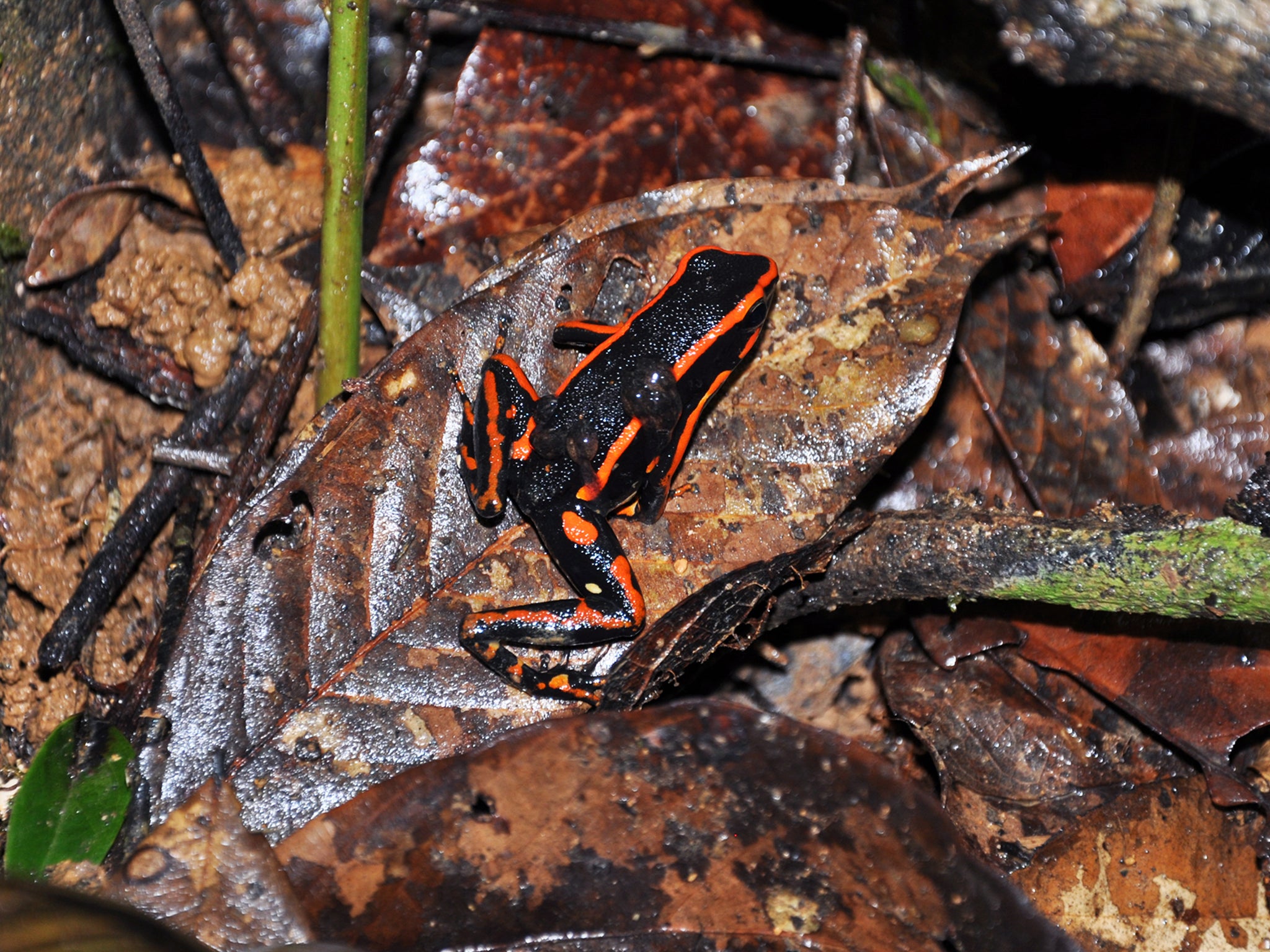The simple signal that sets off a complicated journey for the South American poison frog and its tadpoles
What is it that makes the males carry their young to a rainforest pool?

South American poison frogs are known to most people for their venom – and their brilliant colours. But in almost all species the poison frog carries tadpoles on its back to a rainforest pool for their final growth stage.
One species, Allobates femoralis, may or may not be mildly poisonous, and for colour it has a splash of orange on its thighs. Thus its endearing common name, the brilliant-thighed poison frog. And sure enough, the females lay the eggs in a relatively dry spot in the rainforest, and once the embryos reach tadpole stage, the males load them on their backs and take off.
Andrius Pasukonis, a researcher associated with the University of Vienna and Harvard University, has been studying these frogs in the rainforest of French Guiana to learn how the males find the pools and what triggers this complicated act of tadpole transport. He and Kristina Beck, a graduate student at the University of Vienna, and others, determined in one project that the frogs don’t search for pools but return directly to pools they know.
“They really rely on their spatial memory; they don’t randomly wander around the forest until they bump into pools,” Pasukonis says. The publication of that research was the first time the navigational behaviour of the frogs was described, he adds.
He and his colleagues also found that they could trigger the complex behaviour of tadpole transport simply by putting tadpoles on a frog’s back. The tadpoles could come from any frog at all. And the method worked just as well with females as males. That was a surprise, because in nature females only carry tadpoles if the male has disappeared, and then they will only carry tadpoles from the exact spot where they laid their eggs. Males will carry any tadpoles found in their territory.
“It caught us off guard”, Pasukonis says, that behaviour which seemed that it might require several actions to trigger it – such as breeding and the presence of eggs or tadpoles in the right place – could be initiated by one simple event.
“Once the tadpoles are on the back, the rule is to go transport them,” Pasukonis says. “I’m still surprised that it actually works.”
But, he adds, the signal that tells the frogs to move is clear and simple: “Tadpoles on the back – you have to go.”
Pasukonis and Beck worked on the two projects with Eva Ringler and Max Ringler, both of the University of Vienna, using a small river island with both natural pools and man-made pools. They lived in huts at a French research station, which had unexpected benefits.
“We get frozen food,” Pasukonis says, “but it will include five types of cheese as well, so you feel that you’re in France.”
Tracking inch-long frogs up to a couple of hundred yards in dense vegetation, sometimes over a day or more, was not an easy task. They first had to catch frogs, and then equip them with transponders attached to tiny silicon waistbands.
The finding that tadpole transport was a fully developed behaviour in both males and females, even though males did it almost exclusively in nature, was another significant part of the research, says Pasukonis. He adds that the study of complex behaviour in amphibians is in its infancy, and hopes to perhaps delve into the underlying neuroscience.
© The New York Times
Join our commenting forum
Join thought-provoking conversations, follow other Independent readers and see their replies
Comments